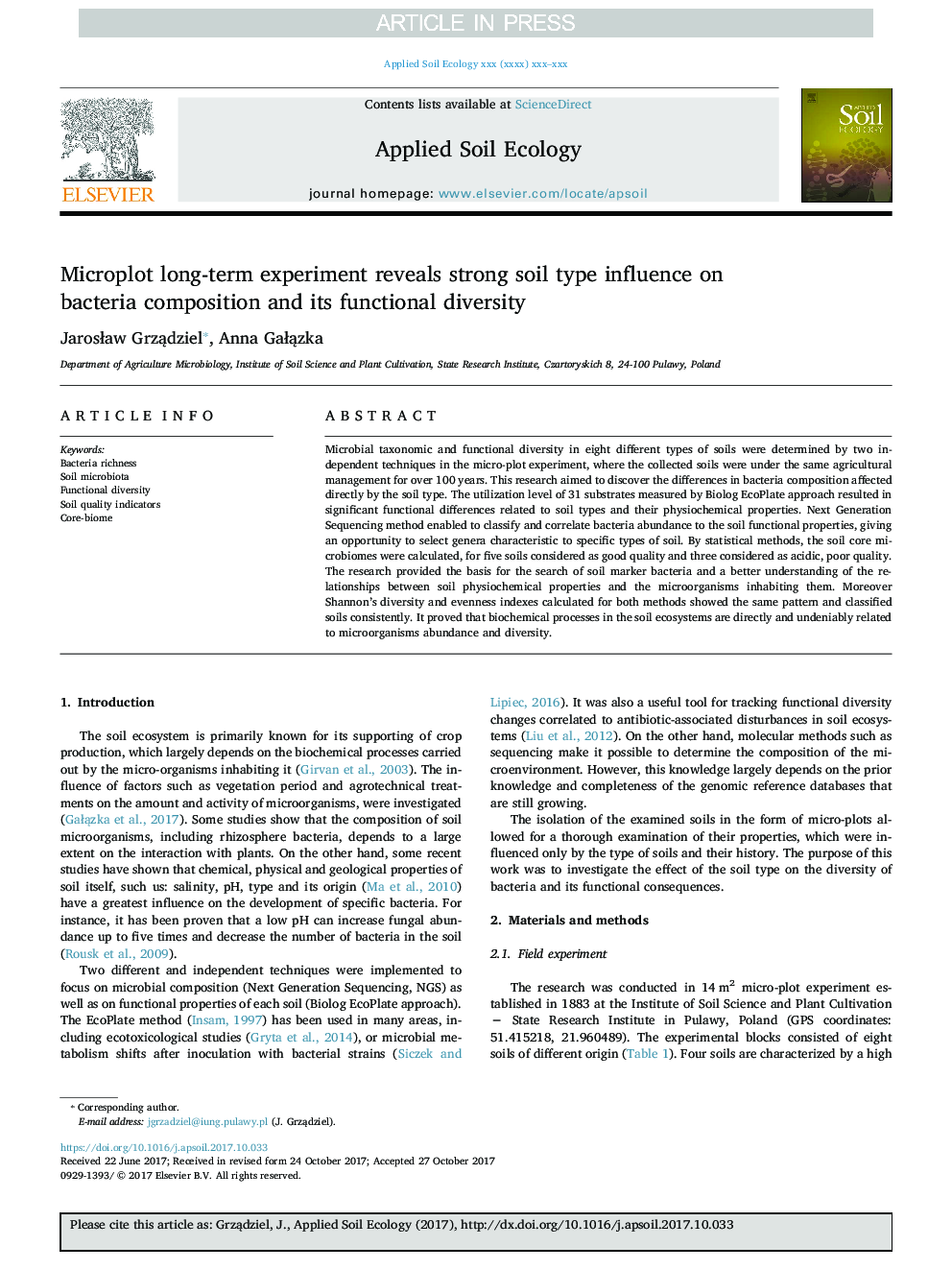| Article ID | Journal | Published Year | Pages | File Type |
|---|---|---|---|---|
| 8846768 | Applied Soil Ecology | 2018 | 7 Pages |
Abstract
Microbial taxonomic and functional diversity in eight different types of soils were determined by two independent techniques in the micro-plot experiment, where the collected soils were under the same agricultural management for over 100 years. This research aimed to discover the differences in bacteria composition affected directly by the soil type. The utilization level of 31 substrates measured by Biolog EcoPlate approach resulted in significant functional differences related to soil types and their physiochemical properties. Next Generation Sequencing method enabled to classify and correlate bacteria abundance to the soil functional properties, giving an opportunity to select genera characteristic to specific types of soil. By statistical methods, the soil core microbiomes were calculated, for five soils considered as good quality and three considered as acidic, poor quality. The research provided the basis for the search of soil marker bacteria and a better understanding of the relationships between soil physiochemical properties and the microorganisms inhabiting them. Moreover Shannon's diversity and evenness indexes calculated for both methods showed the same pattern and classified soils consistently. It proved that biochemical processes in the soil ecosystems are directly and undeniably related to microorganisms abundance and diversity.
Related Topics
Life Sciences
Agricultural and Biological Sciences
Ecology, Evolution, Behavior and Systematics
Authors
JarosÅaw GrzÄ
dziel, Anna GaÅÄ
zka,
